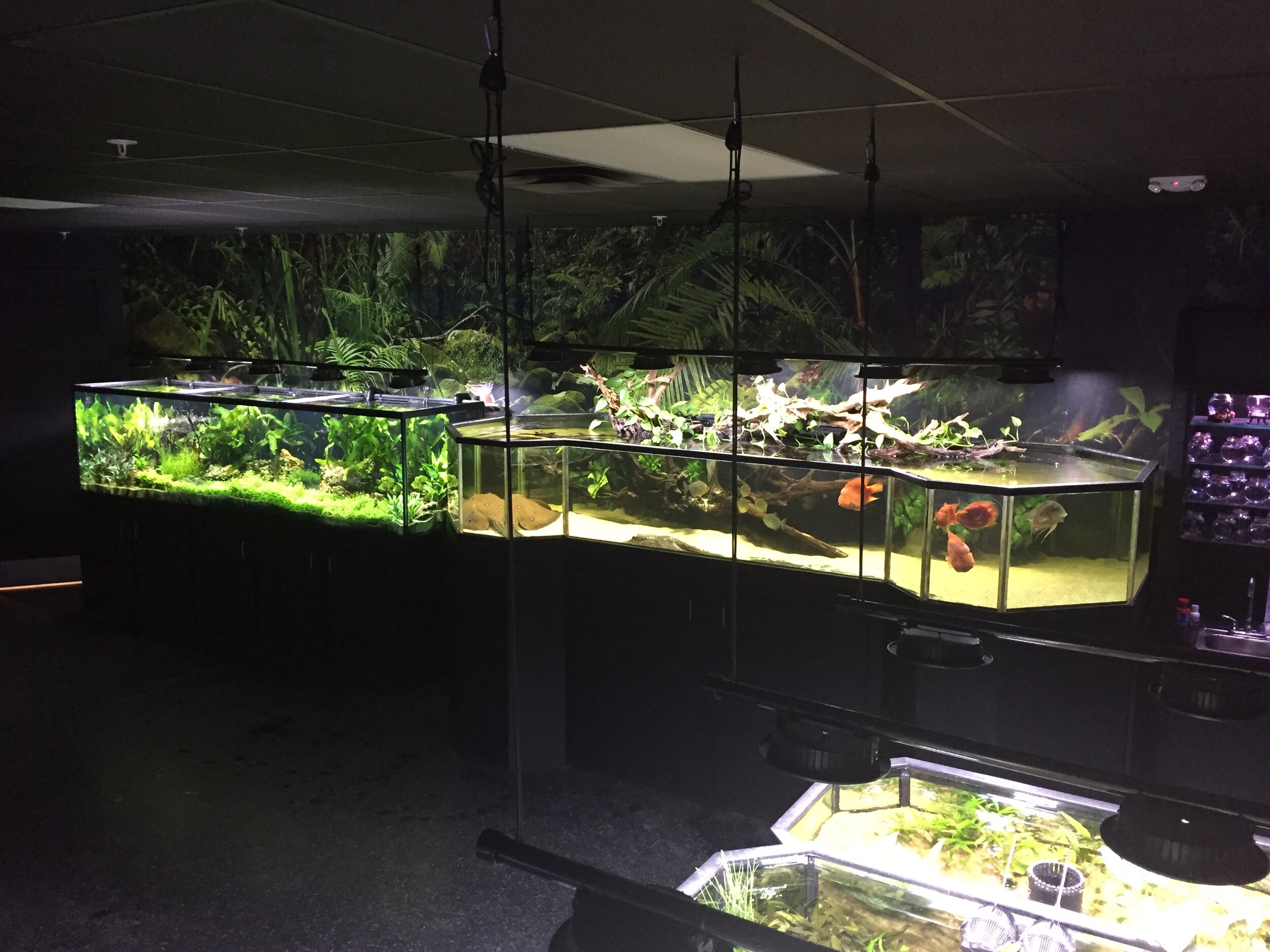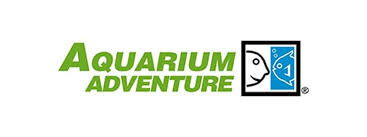
Aquarium Lighting
Light is an important factor in the health of an aquarium. Just as we are recreating an ecosystem in a closed container, we must understand how it all begins, as well. Light is the impetus for life in virtually all environments we know.
The sun produces the light that starts all life, and begins the chain that includes every life form on earth. Plants and animals that utilize sunlight through photosynthesis form the beginnings of the food chain. Knowledge of balances throughout the ecosystem, including the role of light, can help us better understand how to keep the animals and plants in our enclosures.
Having the correct light balance in your tank can make all the difference in the health of your plants and fish. Let our trained staff help you choose the products that will provide optimal lighting for your specific setup. Read our blog for more insider tips and browse our lists of aquariums and products.
LED Aquarium Lights
LED lighting offers some very unique advantages over other types of lighting, particularly in energy use----they use about ½ of the energy of others. They run “cool” to the touch, unlike halide, incandescent or H.O. fluorescent bulbs and so the need for an extra expense of chilling equipment to maintain constant water temperature is not required. They provide a “shimmering” effect to aquarium water that is desired but not found with other standard aquarium lighting. Lastly, but not least, the bulbs themselves last a very long time, averaging 10 years (under normal use) before replacement as opposed to yearly for all other types of bulbs. They are available in many “colors” to match aquarium types (freshwater, planted, marine, reef, etc.) and wattage. It is suggested that about 2 – 4 watts per gallon should serve well.
Fluorescent Aquarium Lights
This type of light fixture and bulb have been by far the most common source of lighting used on aquariums. It has many advantages, such as being energy efficient, cool running, available in a wide variety of sizes and spectrum’s, and it is relatively inexpensive for both the bulbs and fixtures. Fluorescent bulbs come in different diameters and the measurement for this is the T factor. Most bulbs will be listed as T-5, T-8, T-10, or T-12.
High Output Fluorescent Aquarium Lights
These fixtures require special ballasts and bulbs to operate. They can be convenient to use because they behave in the same manner as standard fluorescent bulbs, just with more light output or intensity. The main difference is the increased wattage. These fixtures run at 2-3 times the wattage of standard fluorescent’s. The fixtures produce powerful and intense light, and can be a boon to reef keepers. The High Output (H.O.) fixtures also run fairly hot, and may require additional cooling.
Different Light Spectra
Daylight
Lighting that totes this name will appear very much like normal daylight. Usually the color temperature will be around 5 – 6,500°K, and the light spectrum chart will show output across many areas of wavelengths. Best for general aquarium use.
Actinic
Actinic lighting is that which appears to be blue in our view. Color temperatures for these bulbs generally range from 7 – 14,000°K. A light spectrum chart will show strengths in the shorter wavelengths of the visible spectrum, around 400-450 nano-meters. Most often used to recreate dawn and dusk in the aquarium as other light comes on or goes off. Like a “black-light” it really makes corals fluoresce.
50/50
This label denotes the combination of a daylight spectrum with an actinic spectrum. This type of light is designed for users that want the best light for coral growth and maintenance but also showing a pleasing appearance to the eye and the coral colors pop.
Plant Designed
This focuses on the spectra of light that plants are able to use. When looking at the spectrum of visible light, we see that the color shifts (from shorter to longer wavelengths) from purple to blue to green to yellow to orange and finally to red. Since plants reflect the green wavelengths (they look green to us), the spectra useful for most plants consists of red and blue wavelengths. Most of the light fixtures designed for this will appear yellowish to reddish. There is some minor benefit to plants with these, but with the lack of green spectra, most plants don’t look very green under these lights. Furthermore, higher intensity is a better way to enhance the growth and colors of plants.
Reef Designed
Lights suited for reefs tend to emulate the lighting conditions found on reefs in the wild. Since water is an efficient filter of longer wavelengths, blue is a predominant color under water. Reef lights are generally touted with color temperature numbers and spectrum graphs—both of which have been previously discussed. Just remember that intensity is the primary focus; what the bulb looks like (i.e. the spectrum) is more aesthetic than anything.



